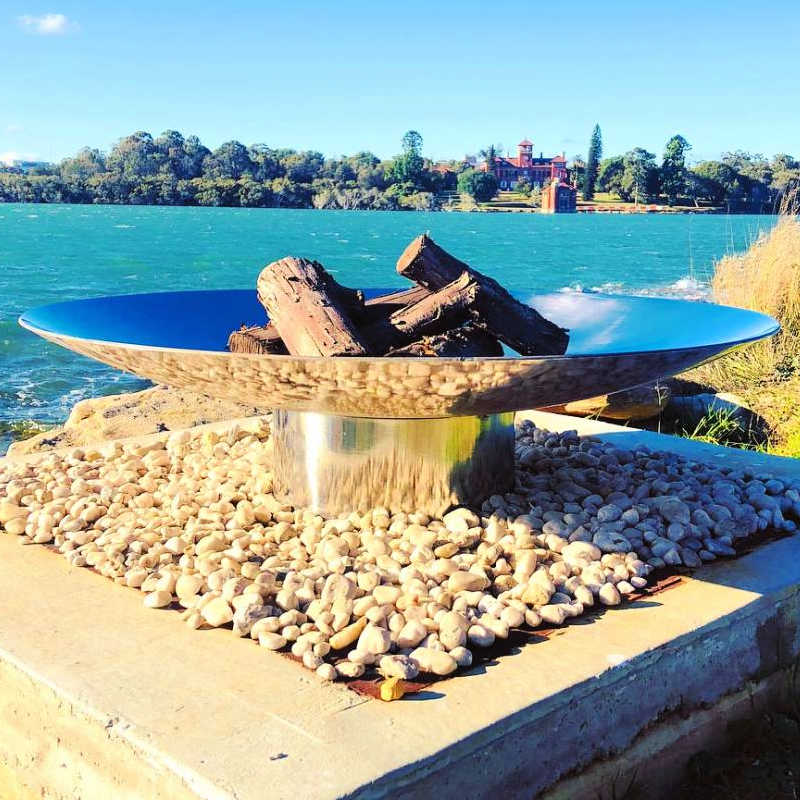
How to Maintain Your Stainless Steel Fire Pit | Guide
Table of Contents
Stainless steel fire pits are a popular choice for outdoor enthusiasts looking to add warmth and ambiance to their outdoor living spaces. Known for their durability, resistance to corrosion, and sleek appearance, stainless steel fire pits are an excellent investment for homeowners.
However, proper care and maintenance are essential to ensure their longevity and preserve their aesthetic appeal. In this guide, we will provide you with essential tips and tricks for maintaining your stainless steel fire pit.
Cleaning your stainless steel fire pit
-
Regular cleaning
After each use, allow your fire pit to cool down completely before cleaning. Remove ashes, debris, and any residue from the fire pit using a soft brush or cloth. Be sure to clean both the interior and exterior surfaces of the fire pit. Pressure cleaners are ideal for stainless steel fire pits, due to their anti-corrosive properties. -
Deep cleaning
Periodically, perform a deep clean on your stainless steel fire pit. Mix a solution of mild dish soap and water, and use a soft sponge or cloth to gently scrub the entire surface of the fire pit. Rinse thoroughly with clean water and dry with a soft, clean cloth to prevent water spots. try to avoid acidity based cleaners, especially hydrochloric acid, which can lead to pitting. Alkaline (base) cleaners are a better option for stainless steel in general. -
Stains and discoloration
Stainless steel can sometimes develop heat stains or discoloration after prolonged use. To remove these marks, use a stainless steel cleaner specifically designed for high-temperature applications. Apply the cleaner according to the manufacturer's instructions and buff with a clean cloth.
Preventing rust and corrosion
-
Protective measures
Although stainless steel is resistant to rust and corrosion, it's not entirely immune. To prevent moisture from causing damage:
- Always use a weather-resistant cover when your fire pit is not in use.
- Store your fire pit in a dry, sheltered area during periods of heavy rain or snowfall.
- A lid can also prevent water build up.
- Ideally the fire pit should have a hole in the bottom to allow draining of any water that may build up. -
Inspect for rust
Regularly check your stainless steel fire pit for signs of rust or corrosion. If you notice any small spots or patches, use a fine-grade sandpaper or steel wool to gently remove the rust. Afterward, clean the area with a stainless steel cleaner and apply a protective coating to prevent future rusting.

General maintenance tips
-
Inspect for damage:
Regularly examine your fire pit for any signs of damage or wear, such as cracks or warping. Address any issues promptly to prevent further damage. -
Polish the fire pit:
Apply a stainless steel polish using a soft cloth or sponge. this maintains the aesthetics of the fire pit but will help protect it if used in conjunction with stainless steel cleaner. -
Use an ember screen:
Using an ember screen or guard can help reduce the risk of accidents and extend the life of your fire pit by preventing embers and debris from escaping. -
Follow manufacturer guidelines:
Always refer to your fire pit's user manual for specific maintenance instructions and safety precautions.
Conclusion
For everything you could want to know about fire pits including the different types, maintenance, and history continue reading our Ultimate Guide to Fire Pits.
Proper care and maintenance of your stainless steel fire pit will not only keep it looking its best but also ensure it remains a safe, functional, and attractive addition to your outdoor living space for years to come. By following the tips outlined in this guide and regularly inspecting your fire pit for signs of wear or damage, you can enjoy countless cozy nights gathered around the warm glow of your stainless steel fire pit.
Check out a range of stainless steel fire pit options here



Leave a comment